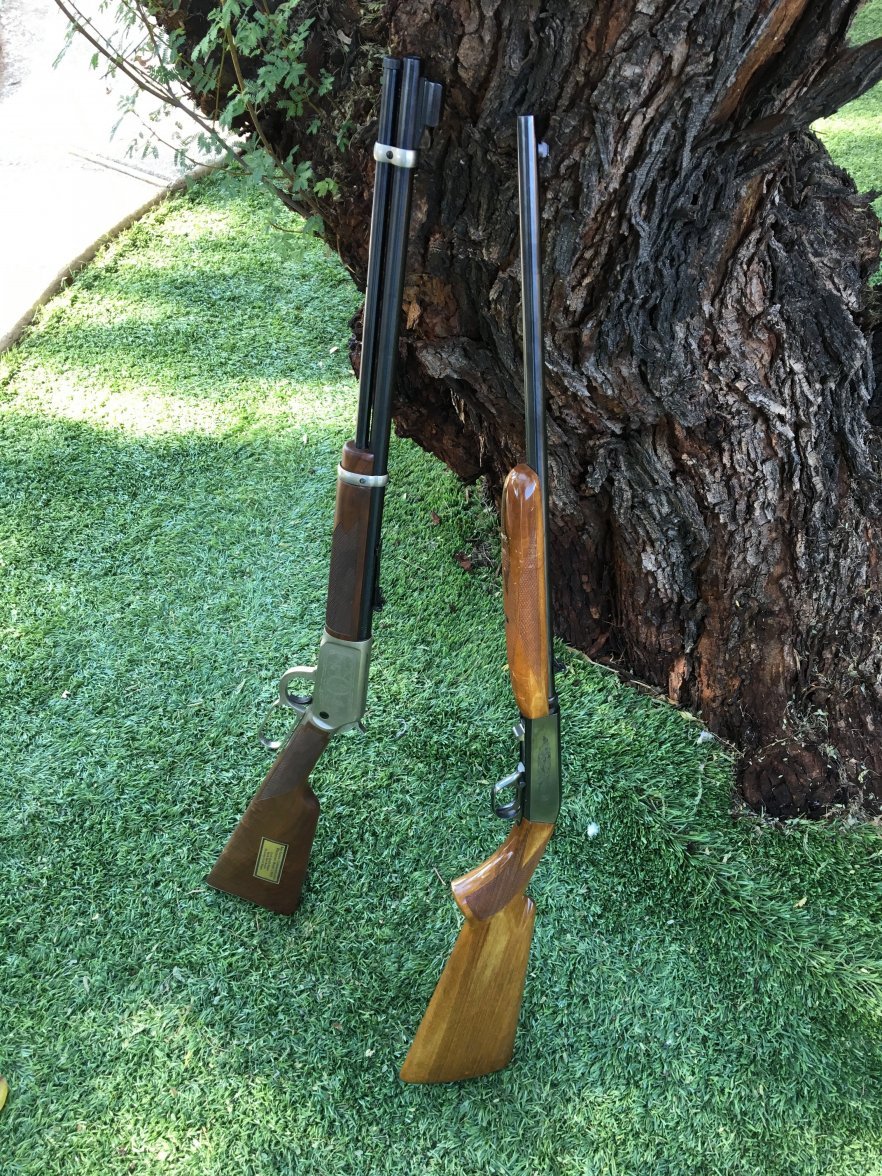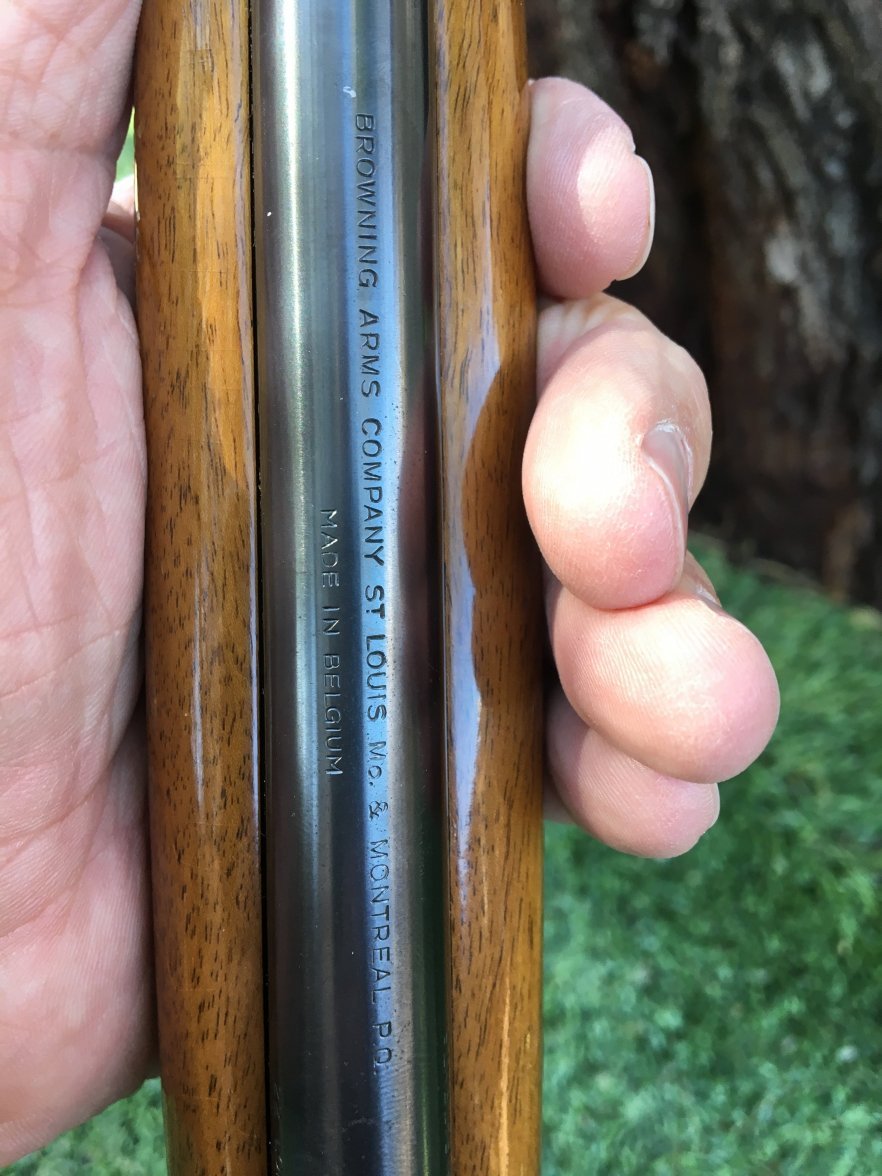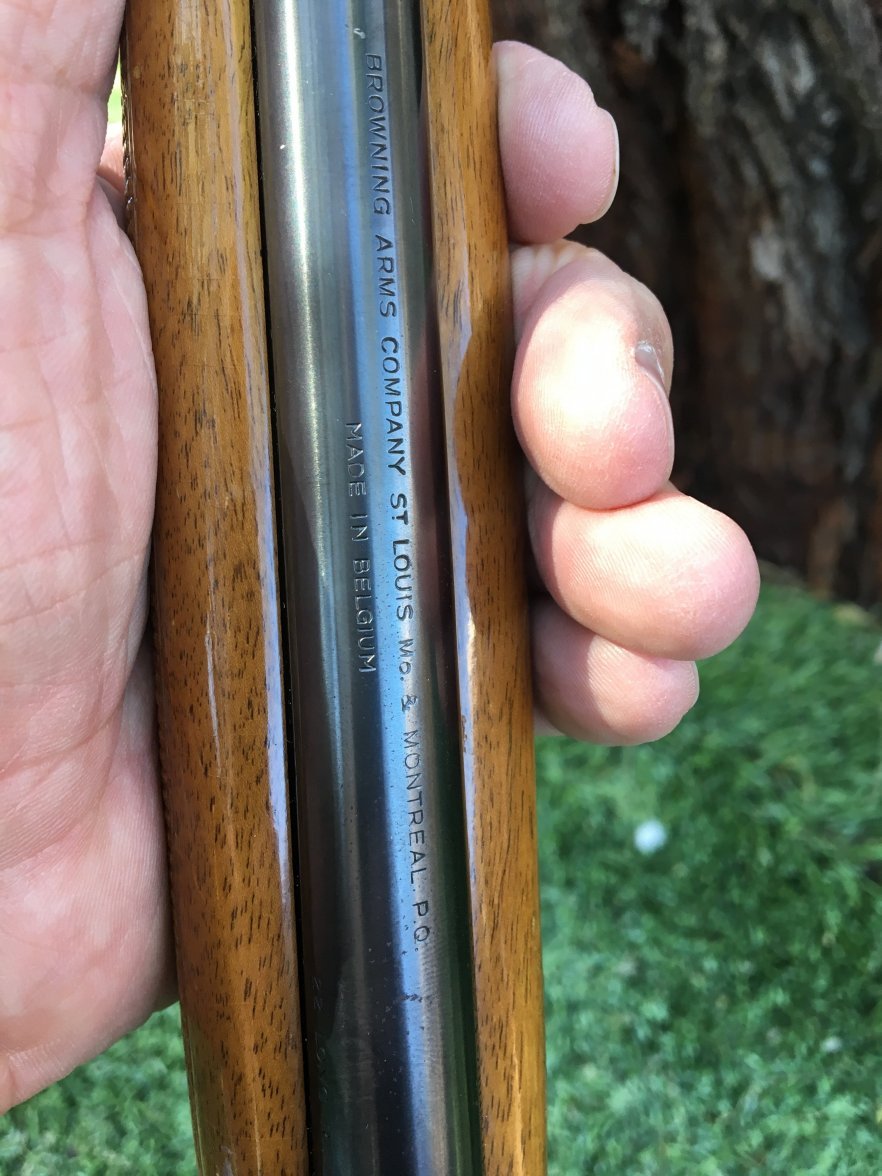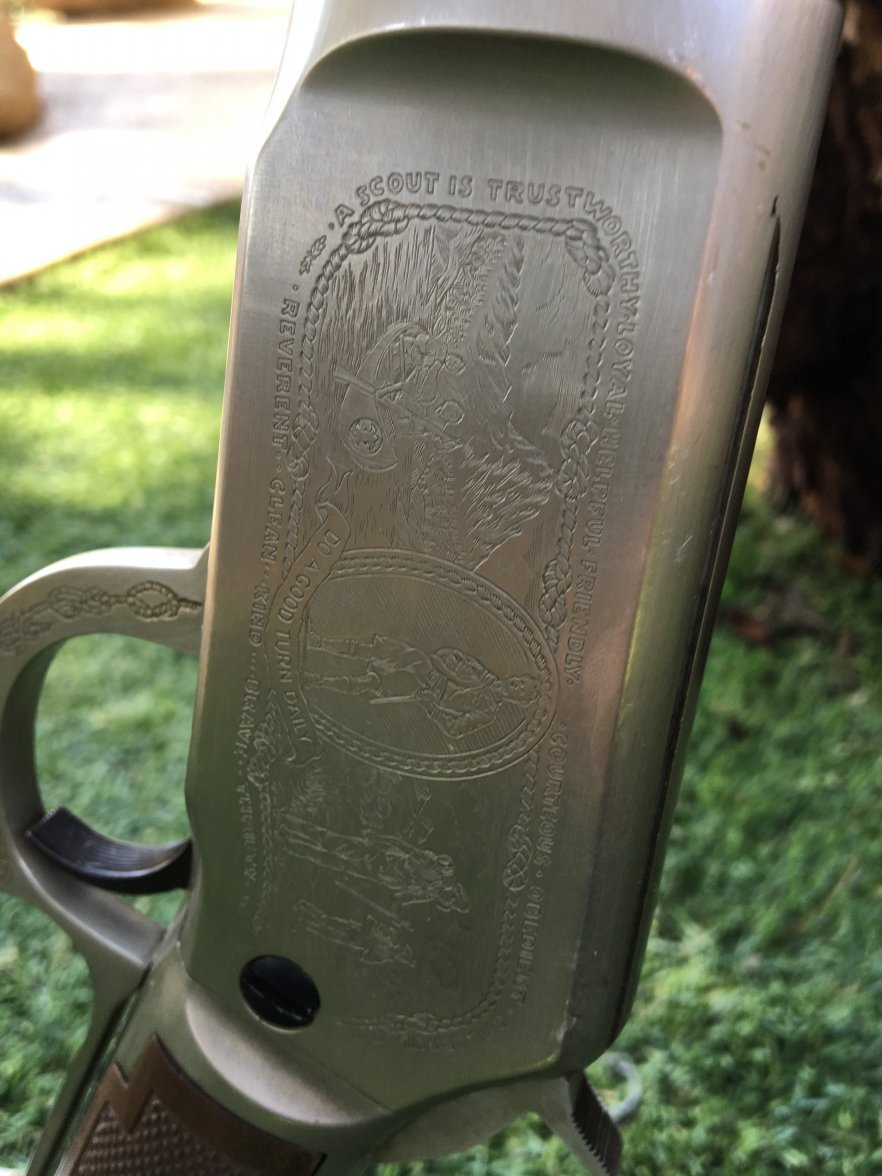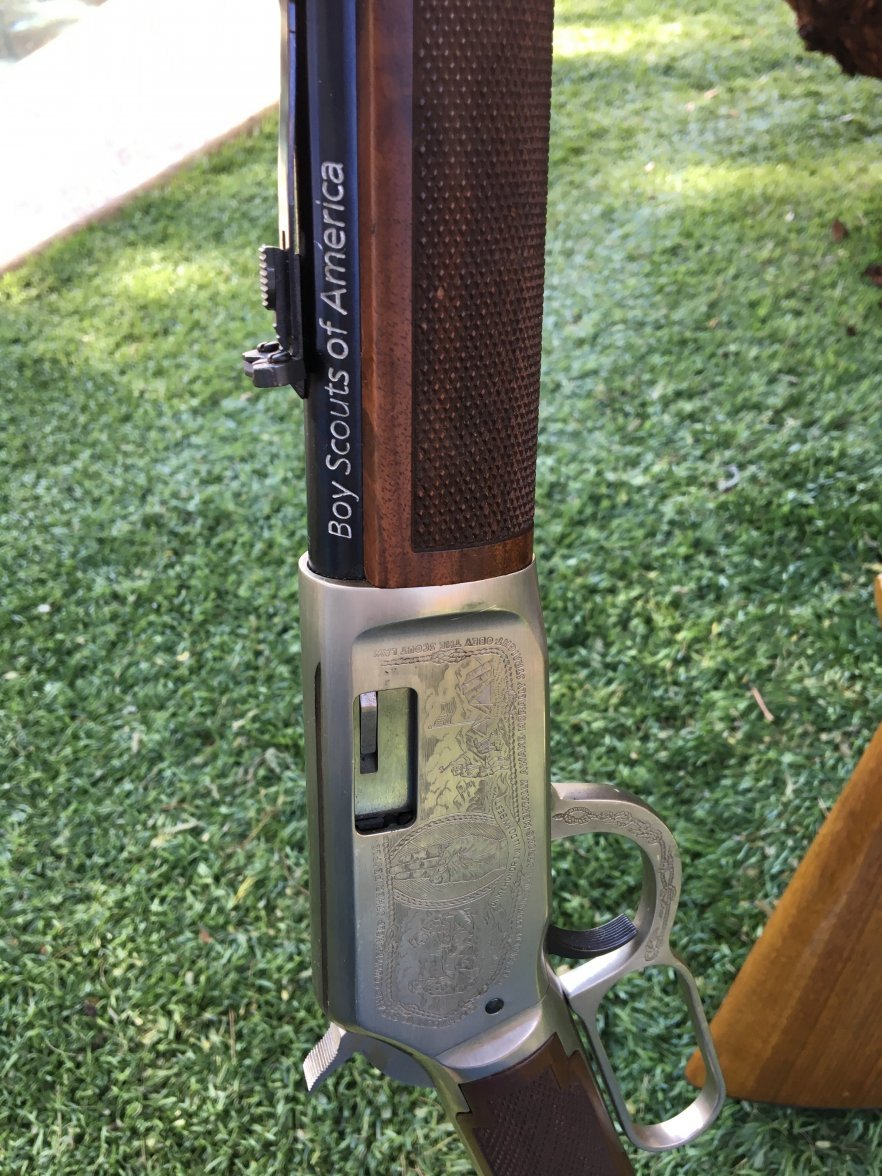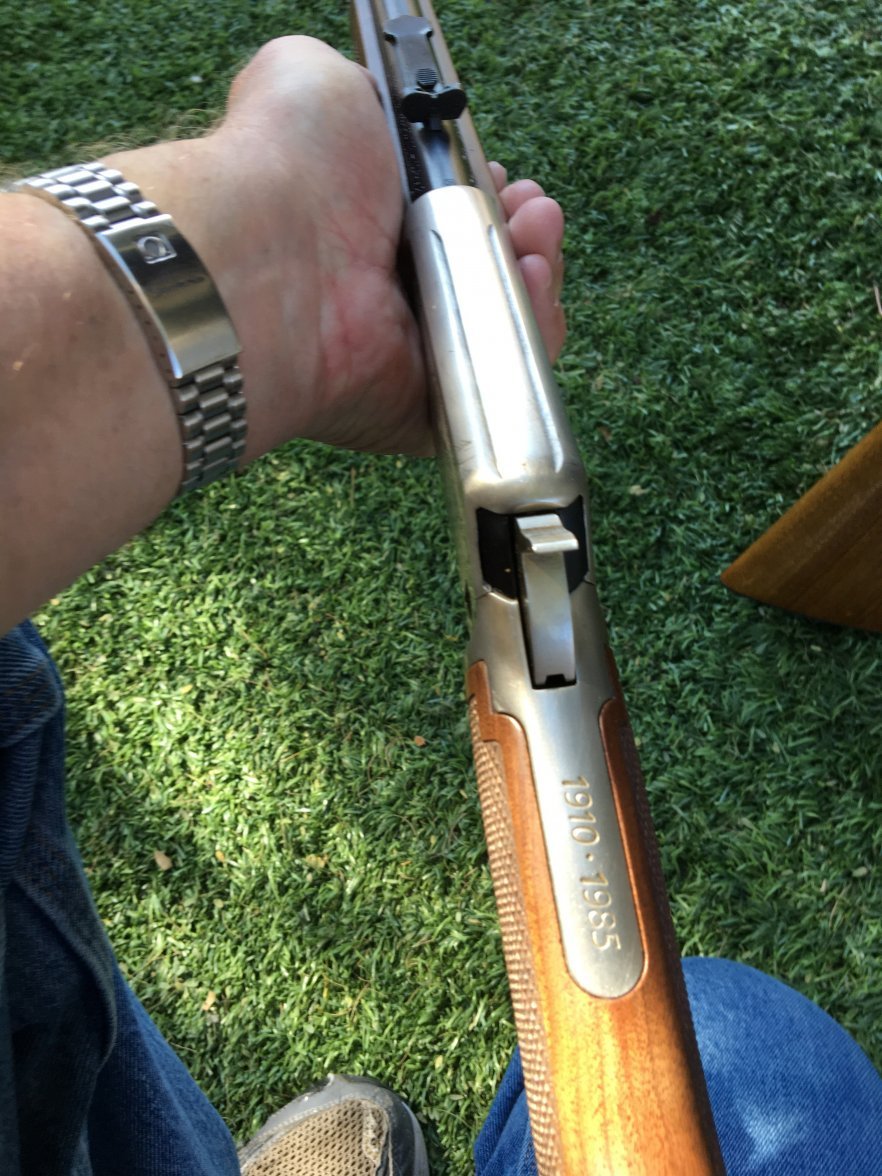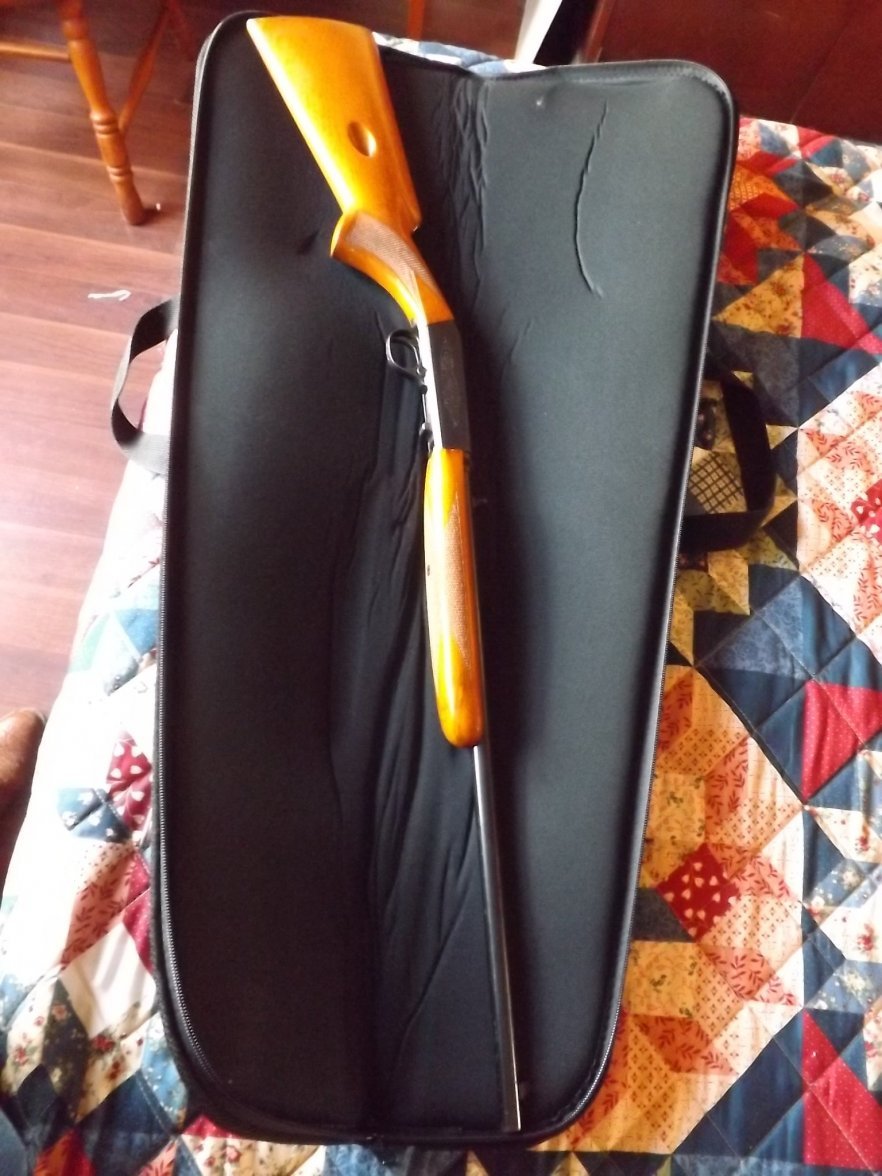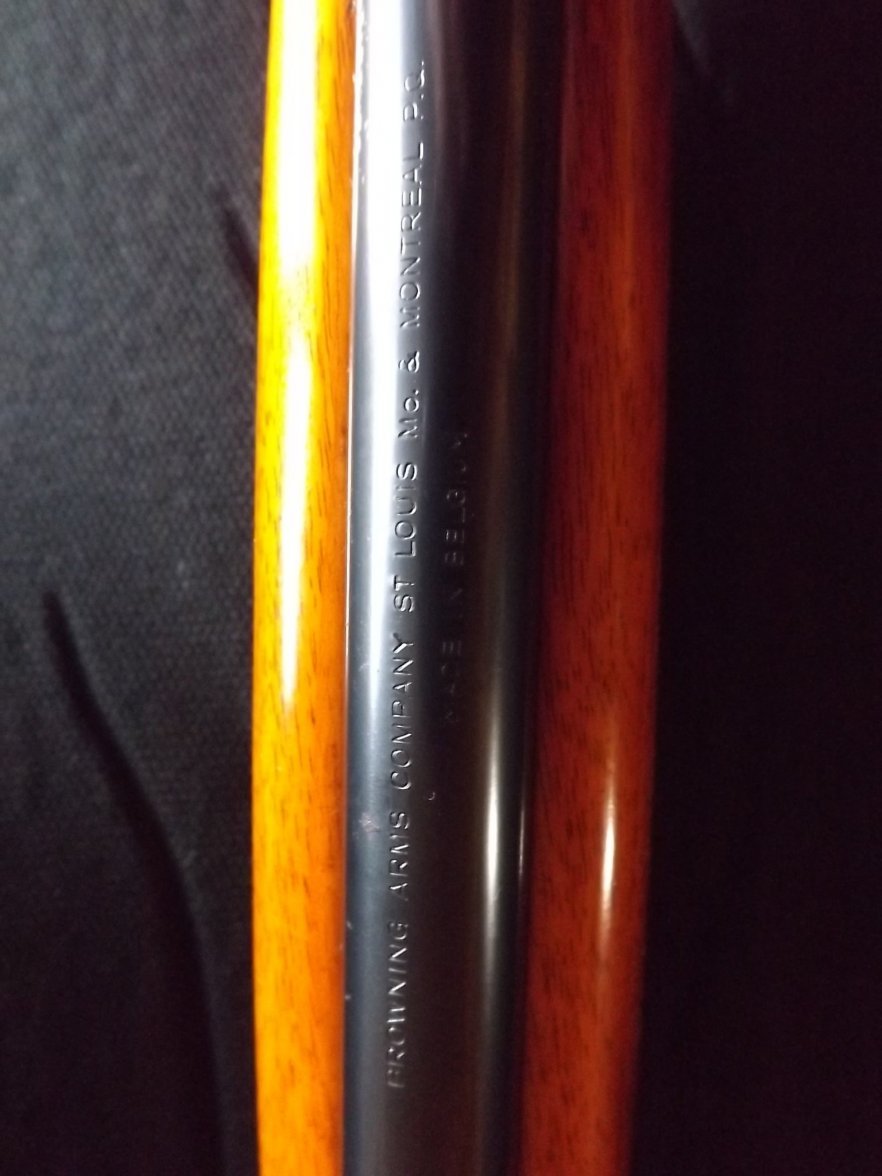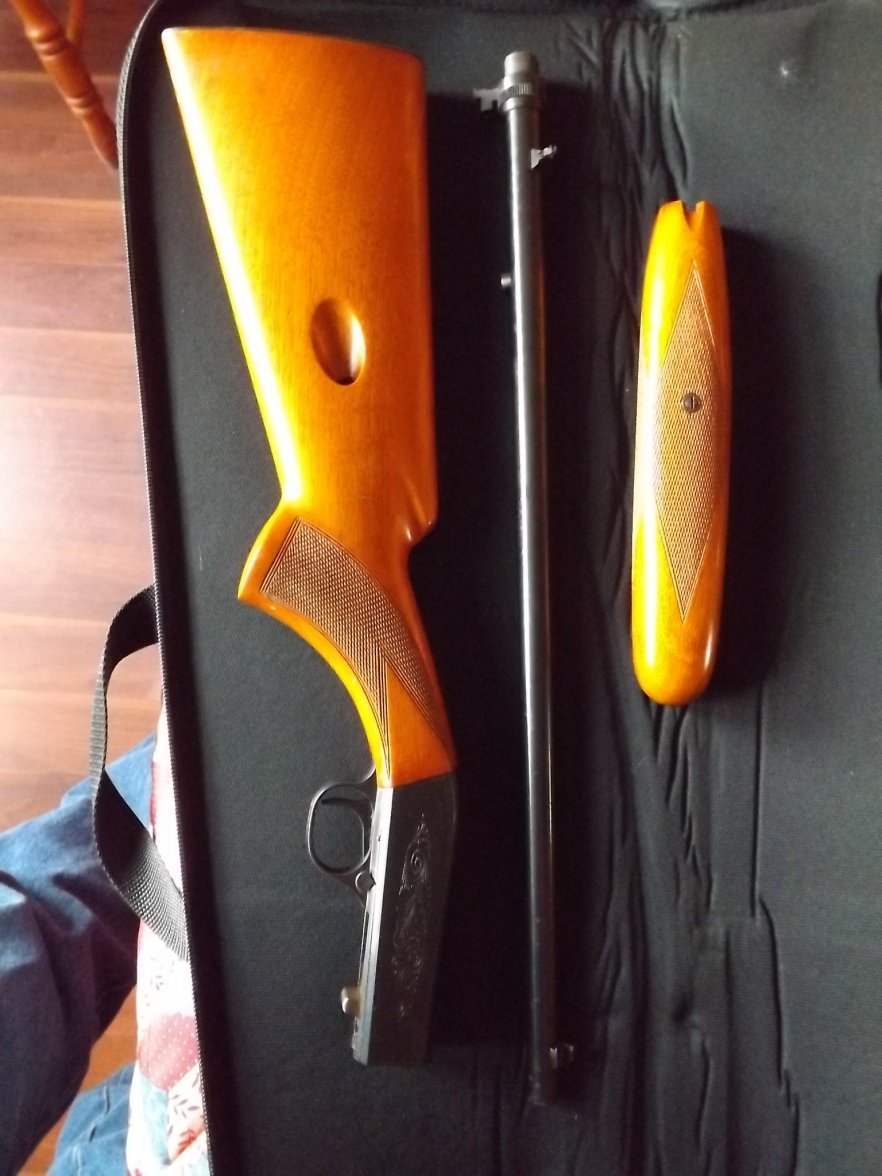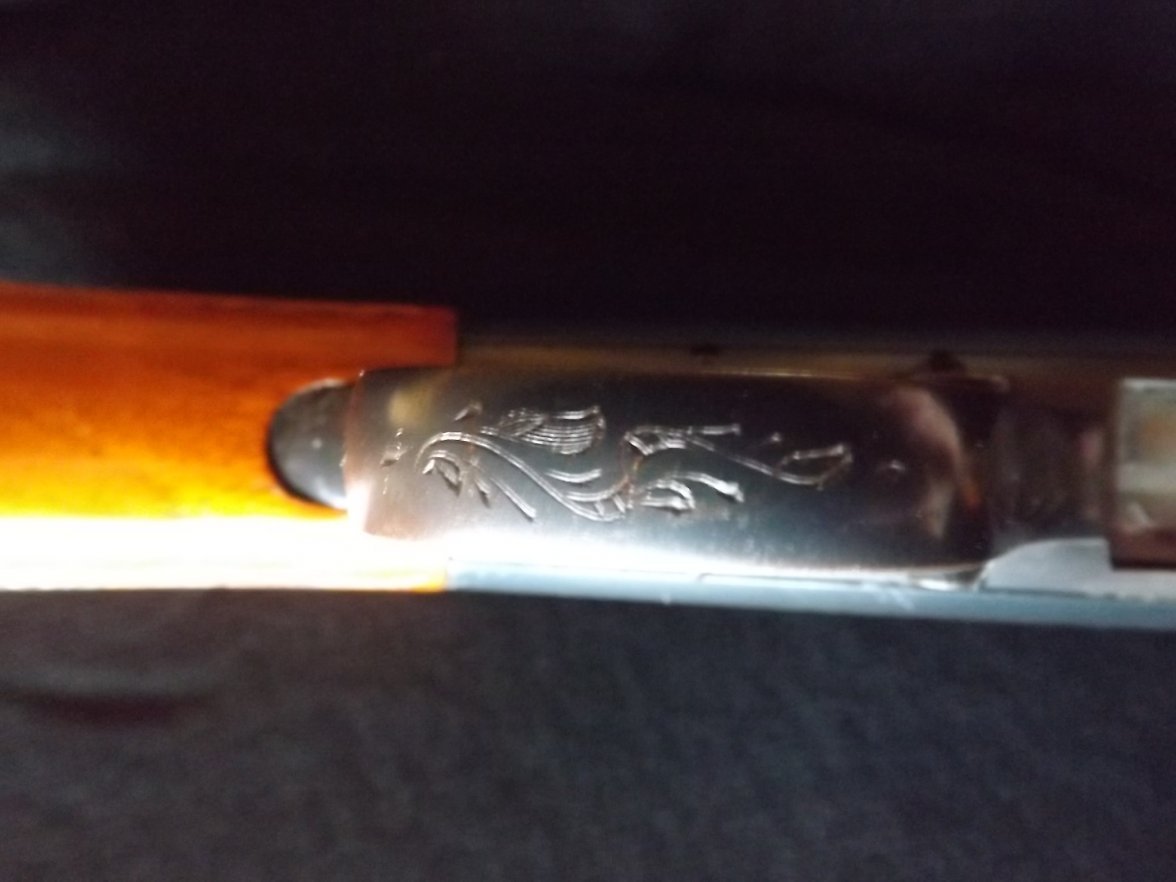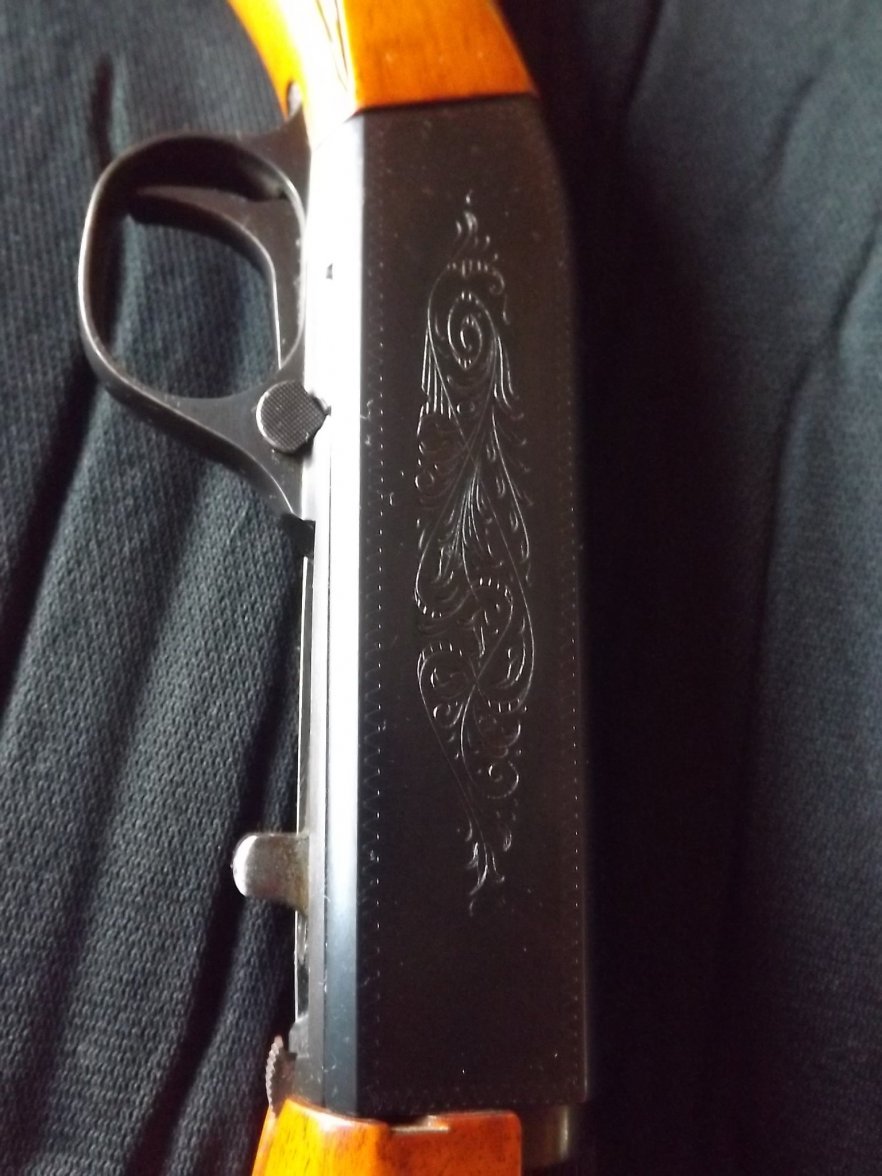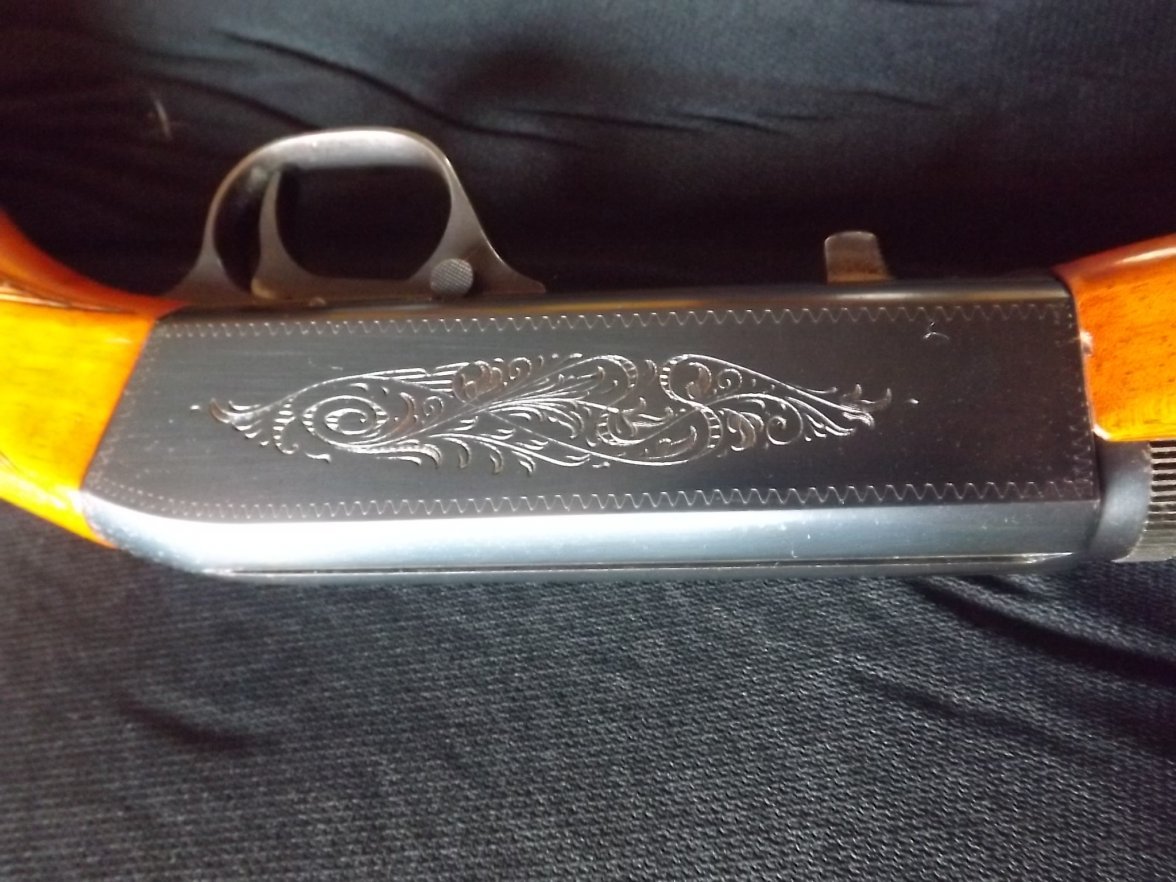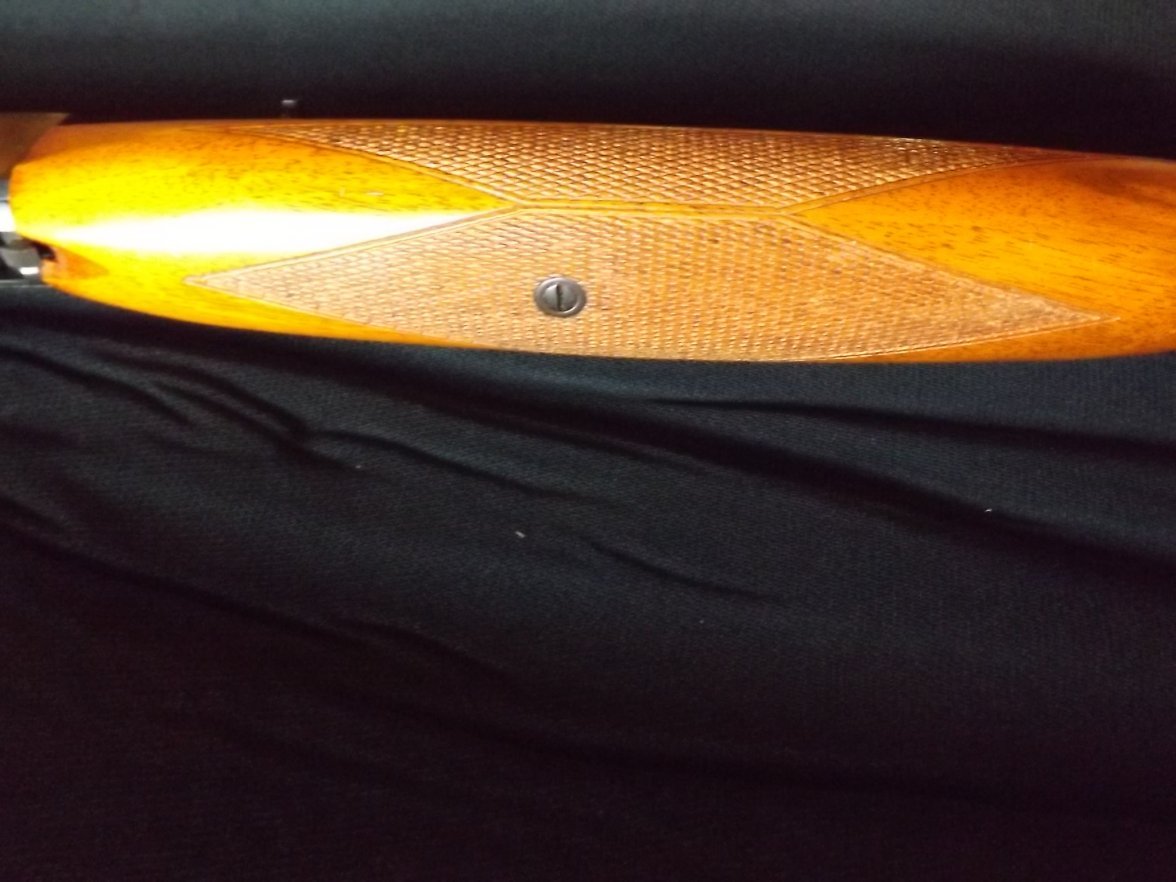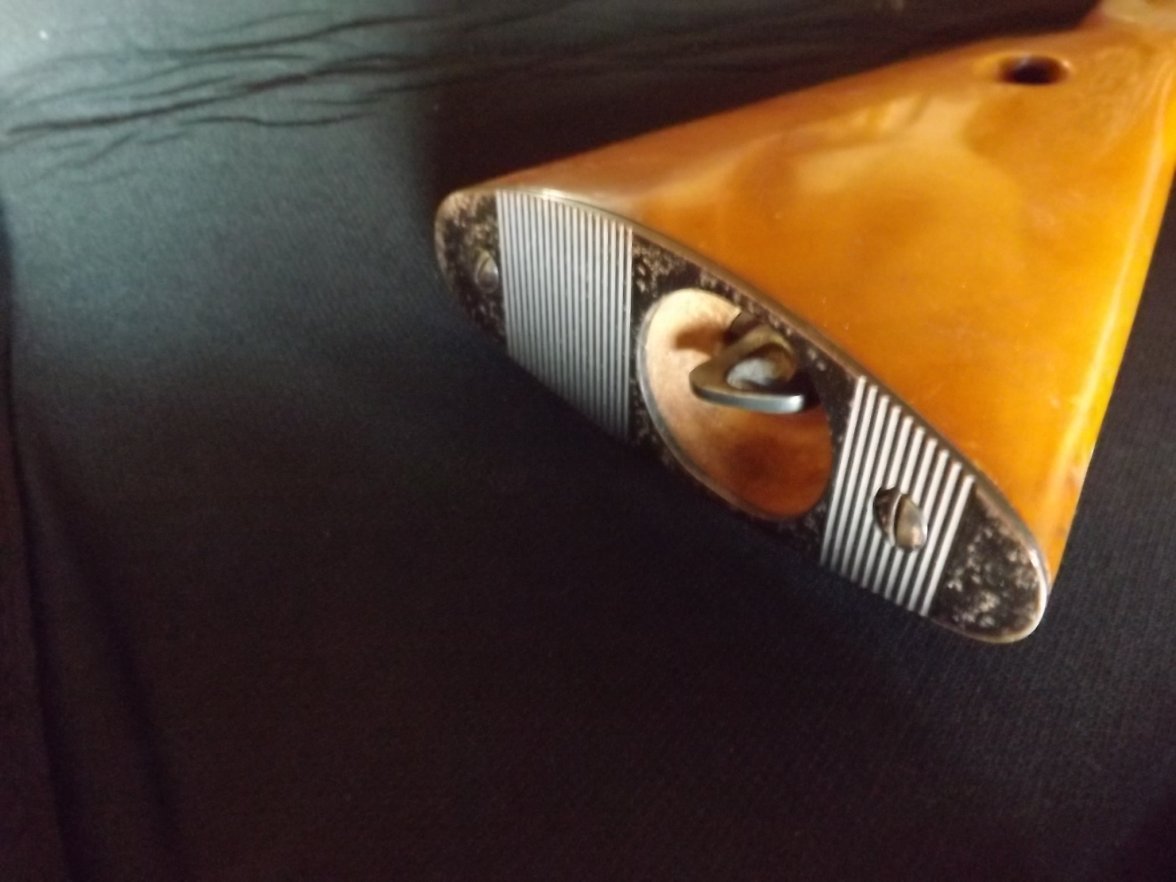Here's a "pontification" I placed up on another forum or two about another .22 I've had around here for a long time.
A Sad Little .22

This scarce model and very uncommonly seen Winchester Model 57 .22 target rifle was unearthed sometime about 1979-1980 in the South Main Pawn shop, now out-of-business, formerly located strangely enough, on South Main Street in Cleburne, Texas. One day when I was browsing the fairly extensive inventory of used firearms they carried, I spied a fresh pile of long guns crammed into a heaping stack into one corner. Perhaps I should have said pieces of long guns for this jumble really consisted of a lot of junk they'd cleaned out and were intending to scrap. Stuff like: broken stocks, broken cheap-o single-shot shotguns, damascus twist double-barrels without stocks, a sporterized Arisaka missing its bolt, cut-down 93 Mauser also missing a bolt, junk Crosman pellet rifles, rusty BB guns. Just a lot of junk, truly worthless junk. I asked to dig through the pile, thinking I might come upon a 98 Mauser action or similar. None were found, in fact there wasn't a single complete firearm in the entire pile except for one, found deeply buried. I almost lost interest before rooting far enough to discover it.
It was a very broken .22 rifle. I was not familiar with my Winchester models back then, but knew the name could mean something so I fished it out. It looked like it would have been cute at one time with its cocking piece reminiscent of a 1903 Springfield. But it was in a sorry state. No finish, ample rust, bore like a plowed field, and the stock had been horribly smashed. Extensive crude repairs had been made and then the stock had been broken badly a second time at some later date. When I held the rifle horizontally, supported at the pistol grip, the barrel pointed drunkenly toward the floor, a frightfully extensive and splintery split running through the fore end and back to the action.
The Winchester Model 57 was designed to be a target right for junior competition, intended to be a sort of "junior" Winchester Model 52. It was manufactured from 1926 to 1936, serial numbered to 19000-and-something, the serial number sequence being shared with the even scarcer Winchester Model 56, which was the sporter version of the same action design, only with a different stock design and lacking the Lyman sight. Most were produced prior to 1930 and the final few years were probably assembled from a parts clean-up.
The pawn shop gigged me for $30 for this piece 'a junk and I carried it home. I had me a project. I had hopes that the barrel would clean up enough to group decently. If it did then I was going to order a generic stock that Fajen then advertised in their catalog that could be adapted to several different Winchester magazine-fed bolt-action .22s.
The 22-inch barrel sports a '27 on its underside, beneath the stock and in front of the action. This means the rifle was produced just prior to the advent of non-corrosive priming and the bore was a testimony to the ravages of the corrosive ammunition of the era in which it was made.
Impatient to fire a round through it, I just grabbed the bottle of Elmer's Glue out of the kitchen hardware drawer and filled the huge fore end crack up with glue, wound several stiff rubber bands around the repair and screwed a couple of c-clamps to the fore end for good measure.
The aperture in the Lyman 42W receiver sight was smushed so I stopped by Gary Fellers' tables at the next Fort Worth Round Up Inn gun show and got a replacement.
These two repairs and the clean-up represent the sum total of effort expended on the rifle to date and that was nearly 40 years ago.
I likely purchased my first jar of JB Bore Cleaner for this rifle and after much scrubbing, produced a bore that appeared as if a bullet would actually pass through it. A jillion rounds later and with regular cleaning, the bore is burnished to the point it doesn't look so bad.
Right off the bat the rifle was bench rest tested for group at 100 yards and it proved good for easy 1 1/2-inch 5-shot groups, one even measuring 1 1/4-inches. It's a sleeper and one of the most accurate .22s I have. Remember, the bore doesn't look bad, but it also doesn't look good by any stretch of the imagination.
The rifle possesses the most wonderful two-stage trigger you ever saw with a dreamy trigger sear. This trigger has much to do with its accuracy performance.
Since its early days here, the rifle's been toted to Lake Leon on endless occasions for hunting and plinking, pursued rabbits on my parent's old place where I grew up, pursued more rabbits and squirrels in the Island Creek bottom south of Grandview, Texas. My brother-in-law's been on outings where it came along. My huntin' cousins have been amused by its homeliness. It's done duty as the yard defense gun, even recently. Most importantly, our two sons received early instruction on shooting and gun safety with it. They also competed with it in junior small-bore matches at the Central Texas Rifle & Pistol Club near Waco. It even occasionally won them first place ribbons against competitors with far more elaborate and expensive match .22s.
Mrs. noelekal even used once it to defend the house against a nitwit feral dog bent on digging his way into our house through a dryer vent. He kept returning, had torn up the vent and was doing extensive damage to the exterior brick work. One day she'd had enough and surprised our sons by employing the Model 57 to drop the dog in his tracks as he was attempting to make his escape, running across the back yard and into a field.

Our eldest son about 32 years ago, on his first hunting trip to Lake Leon with Dad
Probably 20 years after acquiring it, the rifle was lying on the reloading bench, its bore soaking after a shooting session. The freezer was situated right next to the reloading bench in a large laundry room. Mrs. noelekal dug through the freezer for something and had placed a package of frozen meat on the bench. A couple days later I discovered the now thawed package lying across the barrel of the Model 57 and bloody meat juice pooled on the bench. A further indignity that the rifle suffered.
I've often thought of providing it with a complete restoration with careful polish and blue, a new walnut stock custom made to correct profile. It's been a part of our family so long, looking bedraggled as it does, that I'm sentimentally attached to it. When I kick off, it'll likely be the single firearm our two sons fight hardest over. It was once sad and forlorn, but it's been a happy working rifle and well appreciated for a long time now.














